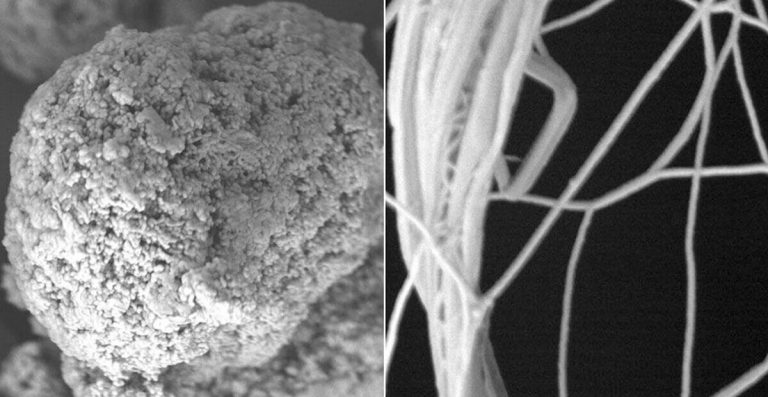Thermally Conductive Plastic Films Could Replace Metals in the Near Future
Plastics have always been the go-to choice when it comes to thermal insulation. For example, polymers like silicone and Styrofoam are good at trapping heat. However, the image of plastics as insulators has evolved. Researchers from the Massachusetts Institute of Technology (MIT) have created thin plastic films that have the ability to conduct heat. Compared to plastic wraps, these films are thinner and conduct heat better than ceramics or metals.
The team is well on its way to create flexible, lightweight, and corrosion-resistant plastic insulators which could in the future replace traditional heat conductors. We could find applications that range from:
- Heat-dissipating elements in laptops and phones
- Cooling material for refrigerators
- Cooling for auotmobiles
- Heat-dissipating fabrics and textiles
According to one of the researchers, Gang Chen, thermally conductive plastic films could have the power to design innovative applications. This could enable many industries to replace alloys and metals as a medium of heat exchangers.
These plastic films were created using polyethylene’s molecular knots. These knots helped the researchers to parallel chains that conduct heat. A custom-built flow system was then built to untangle the chain of the molecules. A liquid-nitrogen-cooled plate was then used to create thick plastic films. These films were later heated and stretched to create ultra-thin plastic wraps.
The team then proceeded to design an apparatus that could measure the film’s heat conduction. Most plastics can usually conduct heat at 0.1-0.5 W/m⋅K. The thin polyethylene films ended up measuring at a whopping 60 W/m⋅K. Moreover, the new films were conductive than steel or ceramic.
The films were later imaged and the team noticed that the material displayed properties that were similar to nanofibres. This discovery could help the team to create microstructures that effectively conducted heat. It should not come as a surprise if we start seeing these thermal plastic films being used in heat conductors in automobiles, innovative electronic devices, and lightweight printed circuit boards for batteries.
Source:
https://news.mit.edu/2019/metal-like-polymer-films-conduct-heat-0430
Leave a Reply Cancel reply
Recent Posts
- Understanding The Materials That Are Used To Build Plastic Toys
- All You Need To Know About Food-grade Plastics
- A Glance At The Materials That Boost The Performance Of Plastics
- Understanding The Importance Of Exploring New Business Opportunities In The Plastic Industry
- Understanding The Importance Of Investing in R&D For The Plastic Industry
Categories
- 3D Printing
- AIPMA
- Automation
- Automobile Sector
- Bio Plastics
- Environment
- Innovations In Recycling
- Latest Innovations
- Molds & Dies
- News
- Packaging Industry
- Plastic
- Plastic Application
- Plastic Industry
- Plastic Market
- Plastic Myths
- Plastic News From The World
- Plastic Packaging
- Plastic Products
- Plastic Recycling
- Plastic Solar Cells
- Plastic Toys
- Plastic Waste
- Plastic World
- Plastics
- Plastics And Their Applications
- Plastics In Agriculture
- Plastics In Healthcare
- Plastics In Medical Industry
- Plasticulture
- Processing Machinery
- Recycling Machines
- Robotics
- Uncategorized
- Virtual Reality
Archives
- November 2023 (3)
- October 2023 (2)
- September 2023 (3)
- August 2023 (3)
- July 2023 (3)
- June 2023 (3)
- May 2023 (2)
- April 2023 (2)
- March 2023 (2)
- February 2023 (2)
- January 2023 (2)
- December 2022 (3)
- November 2022 (1)
- October 2022 (1)
- September 2022 (2)
- August 2022 (1)
- July 2022 (3)
- May 2022 (3)
- March 2022 (2)
- February 2022 (1)
- January 2022 (1)
- September 2021 (2)
- August 2021 (3)
- July 2021 (4)
- June 2021 (4)
- May 2021 (3)
- April 2021 (2)
- March 2021 (4)
- November 2019 (8)
- October 2019 (8)
- September 2019 (8)
- August 2019 (8)
- July 2019 (8)
- June 2019 (8)
- May 2019 (8)
- April 2019 (8)
- March 2019 (8)
- February 2019 (11)
- January 2019 (8)
- December 2018 (8)
- November 2018 (12)
- October 2018 (12)

